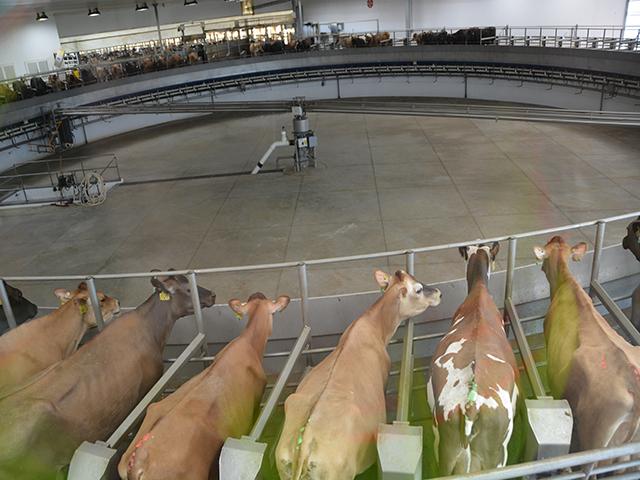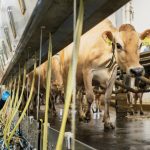
The Food and Drug Administration has approved a feed ingredient that reduces methane in lactating dairy cows — a move that could help dairy producers get paid through voluntary carbon markets — while USDA began taking steps to develop standards for carbon programs.
Elanco on Tuesday announced the FDA has approved its feed additive Bovaer (3-NOP) as the “first-in-class methane reducing feed ingredient” that meets safety and efficacy requirements for lactating dairy cattle. Elanco stated a tablespoon of Bovaer daily can reduce a dairy cow’s methane emissions about 30%. One million cows using Bovaer could reduce emissions roughly the same as removing 285,000 cars from the road each year.
USDA has already provided $90 million in conservation grant funding to help prepare at least some dairies to take advantage of feed additives that lower methane emissions.
Jeff Simmons, president and CEO of Elanco, indicated the new feed additive would help dairy farmers generate income by lowering their methane emissions.
“This monumental announcement has the ability to accelerate the opportunity for climate-neutral dairy farming while creating a new revenue stream for dairy farmers across the country,” Simmons said.
Gregg Doud, president and CEO of the National Milk Producers Federation, said the FDA approval of Bovaer would help the industry’s pathway towards net-zero emissions. “Bovaer and other new technologies that reduce enteric emissions will help U.S. farmers be rewarded for participating in voluntary, producer-led sustainability initiatives, which is critical for the success of such efforts,” Doud said.
Bruce Knight, a conservation consultant and former USDA undersecretary for marketing and regulatory affairs, said some steps will be needed — including the use of USDA conservation programs — but federal approval of an additive that confirms lower methane emissions sets up the dairy industry be recognized for emission reductions. Given that the additive affects emissions from each cow, it’s also “size neutral” so a small dairy farm could take advantage of lower emissions as well.
“That’s what’s really positive about a feed additive,” Knight said. “The dairy industry is very well poised to act quickly on the adoption of these technologies.”
Cows emit on average 220 pounds or so of methane per year, mainly from belching. According to EPA, a metric ton of methane is roughly 28 times more potent than a metric ton of carbon dioxide. Bovaer works by suppressing the enzyme in the cow’s rumen that forms methane, Elanco stated.
You can now read the most important #news on #eDairyNews #Whatsapp channels!!!
🇺🇸 eDairy News INGLÊS: https://whatsapp.com/channel/0029VaKsjzGDTkJyIN6hcP1K























